

 JOHN CHANDLER tells us how they do things on the continent.
JOHN CHANDLER tells us how they do things on the continent.
When first asked to write this article, I thought that my experiences of Switzerland were more global than the specific station visits that preceeded in this series, so how would I fit them in?
It then dawned on me a few years back that I had realised that there are at least 9 different sub-sets of "Railway Enthusiast" (and that's only at 12" to the foot scale!) So, given that I do not classify myself as a train spotter, loco spotter, loco clicker, track basher, buffer kisser, passenger stock spotter, freight wagon spotter, or timetable riffler, (yes - they're all out there!), but as more of a generalist, I thought I'd approach this from a different angle and a wider perspective.
So, what does Switzerland have to offer? There may be some concepts here that are completely alien to the British Philosophy!
Although Switzerland is a conglomeration of getting on for some 30 self-governing Cantons, they do seem to communicate with each other and, as a result, have a totally integrated transport system. I recall somebody once describing an aircraft as 10000 rivets flying in close formation; Switzerland's not too dissimilar.
The local buses arrive at the station a few minutes before the train is due; they depart a few minutes after the train! Same applies to local, or regional, trains. Even the boats, cable cars and funicular railways are timed to meet the trains. The only exceptions I have found are the local trams and S-Bahn services, but they operate so frequently that nobody notices!
The Swiss also have the concept of a guaranteed connection. To explain this strange phenomenon, I will use, as an example, one of my own experiences. Travelling from Zürich to Interlaken via Bern, our train failed near to Bern. It took some 20 minutes to re-boot the locomotive and get on our way. Our train was feeding onward services to Lausanne, Geneva Airport and Interlaken. Once on the move again, the chief conductor (one of 4 conductors in the 10-car train) announced, in German, French and English, that the connecting services had been held and told us the specific platforms that they would be on. The first connection due to leave was, as always, simply the other side of the platform at which we arrived. I transferred to the Interlaken train, in which the conductor announced that the connecting train for Zweissimmen and Brig was behind us (it was also held!) and that a faster transfer to this train could be achieved at Thun (same platform) rather than the usual one at Spiez, where this train splits, which involved use of the subway. This, again, was trilingual! We arrived in Interlaken on time having made up for some 25 minutes delay. Part of this is due to the Swiss (as well as the Dutch and Germans) operating a Clock-face Timetable. Here, time is key and there is not (always) the need to travel at full line speed. On the Interlaken stretch, we travelled faster to make up the time, but still below line speed! I also know that there is recovery time built into the timetable as well, but, I suspect, not that much.
One noticeable thing in Switzerland is the lack of ticket barriers (although some are threatened in the near future) and line-side fences.
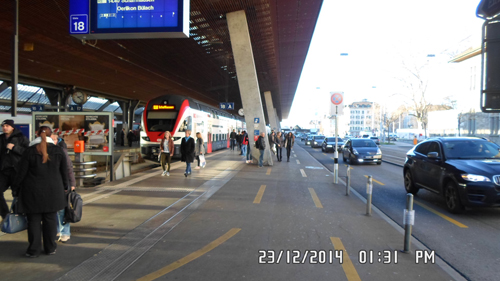
Platform 18 at Zürich opens, almost full length, directly onto the street pavement, as does Platform 1 at Spiez. As mentioned in my article Cab Riding the Gotthard, Switzerland has a wonderful attitude to health and safety - it's YOUR responsibility! Also, with all Swiss between 18 and 45 being obliged to undertake military service and can regularly be seen carrying their guns in the train, I think it's fair to say that the Swiss are a fairly law-abiding nation. I did hear a story that at one station a guy was seen about to cross the tracks as an express was approaching; the station staff shouted at him IN ENGLISH as their first (and only) choice of language!
As mentioned, the Swiss, among others, use a Clock-face Timetable; this means that for any given hour, at x minutes past trains will leave for other destinations. If you were to spend a couple of hours at, say, Zürich Hauptbahnhof, you will find the main station, platforms 3 - 18, empty for most of the time. Go down to platforms 1,2, 21-22, 31-34, 41-44 you will see more frequent traffic but these tend to be the local S-Bahn services which tend to run anything between 10 - 30 minute schedules (still Clock-face, of course!).
The mainline services can be easily summarised in a single sheet diagram covering the whole network. Click image for a larger PDF version.
A few years back, SBB (Schweizerische Bundesbahnen) installed a webcam at one of their major junction stations, Olten. Correspondence on various forums ensued claiming that the Swiss railways were not as efficient as their reputation suggested as the trains were departing some 20 to 30 seconds after the published time. In the UK, the time printed in the timetable appears to be the departure time of the train and the TOCs have spent millions on signage stating that the doors may close up to 30 seconds before departure, and in Virgin's case, 2 whole minutes!. The Swiss (and, pretty much, every other mainland European country) have thought about this and the time published is the door closure time with a short delay until the train starts moving. To misquote a well-known advert, Seemples! None of the schedulers (on various UK networks) with whom I've discussed this can get their heads around this concept!
Let's consider another aspect of the Swiss system which differs greatly from the UK: attachment and detachment. Every morning at my local station, I witness the joining of two trains. There is a member of station staff, suitably (?) attired in an orange hi-viz vest officiating. The attaching train approaches and stops about 2 yards short of the rest of the train. It then lets passengers disembark before an announcement is made, by the driver, that the doors will be closed and passengers should remain seated during the ensuing attachment. Aforementioned guy on platform then calls the attaching set forward but to stop about 24" short. He then instructs the driver to attach, soon followed by a pull-away test. Both parts of the newly joined train are checked to ensure that blue (connected) lights exist on both sets' control panels to agree a successful coupling. This process complete, platform guy then heads back to his office to remove his hi-viz vest to resume normal duties! (Thanks to Pat, Station Staff, and Matt, Southern Driver, for verifying this procedure; I hope I've got it right!)
Let's go to Zweilütschinen on the heavily used tourist route to the Jungfrau mountain. Trains arrive from Interlaken Ost and split to go to Grindlewald and Lauterbrunnen. An official may be present to ensure that the couplings between the two halves of the split do disengage, but there is no fuss. When the train from Lauterbrunnen arrives to join the waiting half from Grindlewald on the return journey to Interlaken Ost, it simply slows and rides until the coupling has been made before releasing the passengers. No-one in a hi-viz vest in sight. Not even an in-train announcement. Same thing happens at Spiez where the Bern to Zweissimmen and Brig services split and join every hour!
I realise that this diatribe has been a departure from the normal format, so, given my opening remarks about the various styles of Railway Enthusiast, I thought I'd include some of my typical photographs for your bewilderment:
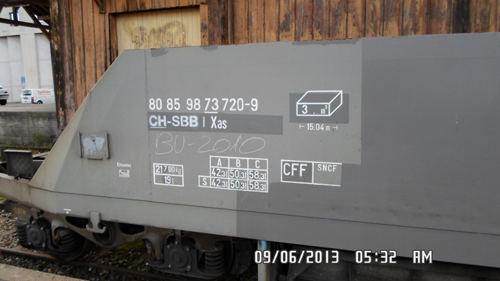
Ballast wagons at Nyon, 9 June 2013
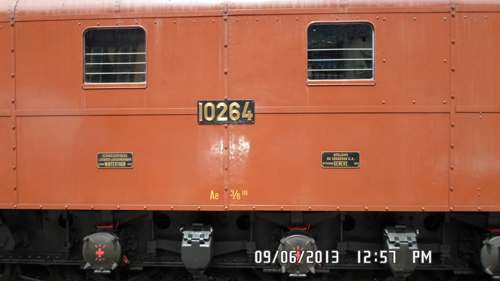
SBB Historic Ae3/6'" on charter duties at St Maurice, 9 June 2013.
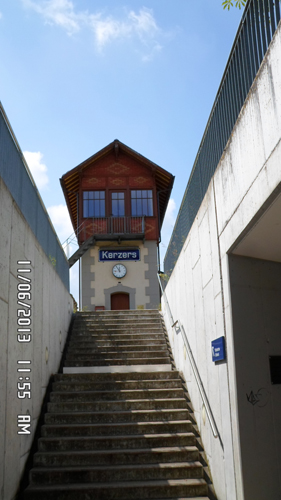
Kerzers Signal Box, from which my home derives its name.
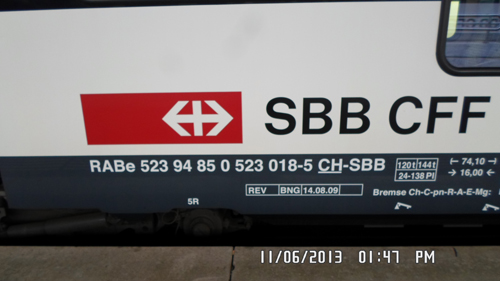
All you need to know about the RABe 523!
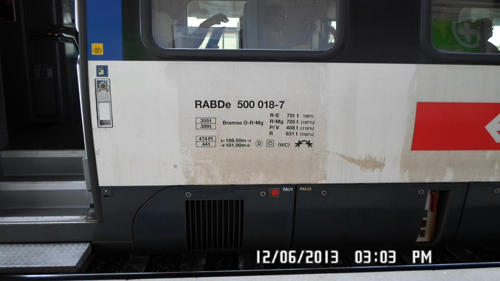
...and the RABDe 500.
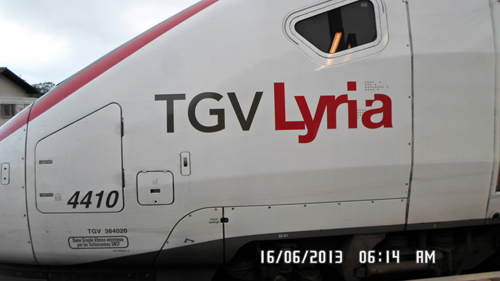
SBB/SNCF owned TGV Lyria 4410.
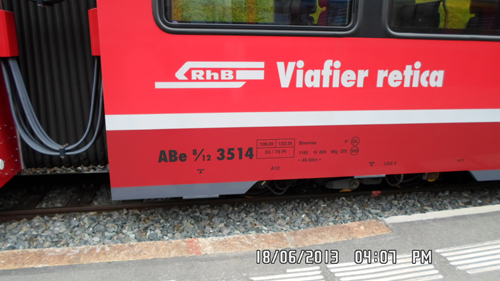
An RhB Allegra.
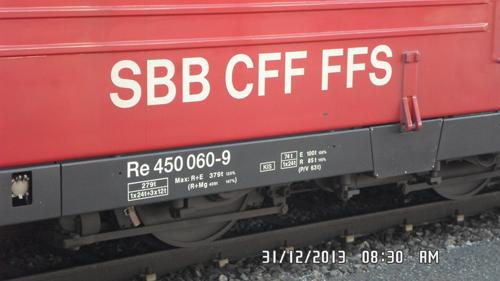
Class Re 450 contribute to Zürich commuter services.
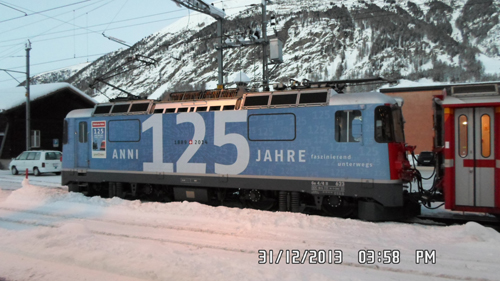
RhB loco Ge 4/4 II 623 in celebratory livery.
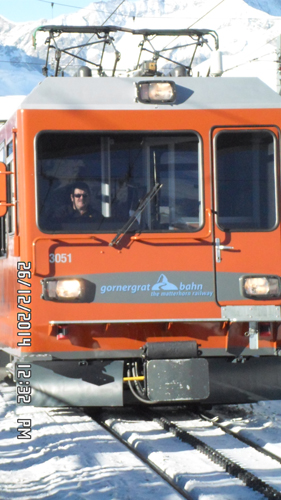
Now here's a mystery: why the odd pantograph? (Rhetorical)
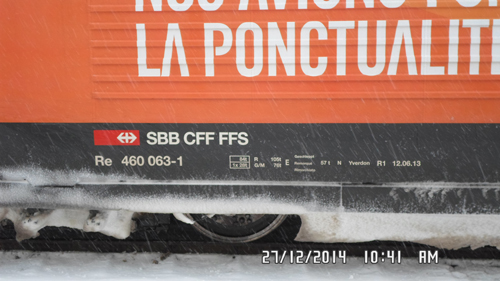
Many SBB locos carry advertising vinyls.
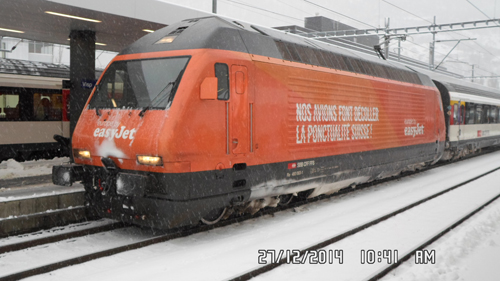
This one is no exception. Easy! My thanks to Gordon Atkinson for his help in providing the gen to track down this locomotive whilst it was working off-diagram! I caught up with it here at Visp. (Ed's note - Cooper Black font on an orange background certainly looks stylish...)
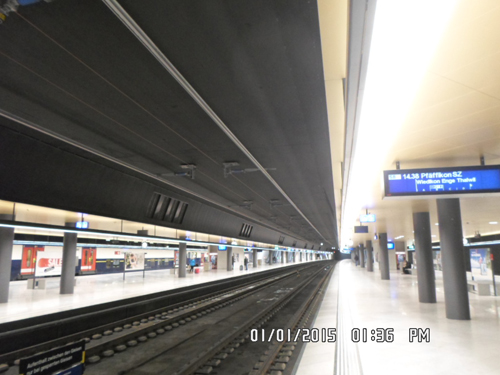
Zürich's newest platforms, 31 - 34
Travelling in Switzerland is straightforward; buy in advance a Swiss Travel Pass (not obtainable in the country itself). This gives unlimited freedom of travel between communities for 3, 4, 8 or 15 days. It covers pretty much every mode of public transport except taxis and even acts as a museum pass, so well worth it. Out of personal curiosity, I usually keep a log of the journeys I have made using my pass and generally manage to get between 3 and 4 times the travel from it than its cost. I say communities; if, for example, you wanted to travel from Grindlewald via Kleine Scheidegg to Wengen, the Swiss Pass would give you a 50% discount on the through ticket; on the Jungfrau route, Grindlewald and Wengen are the last communities on the line - beyond them is purely non-residential so the Pass is not valid on its own.
On a closing note, what's the first thing to do when entering Switzerland? Set your watch to the Station Clock!
All photos by the author.